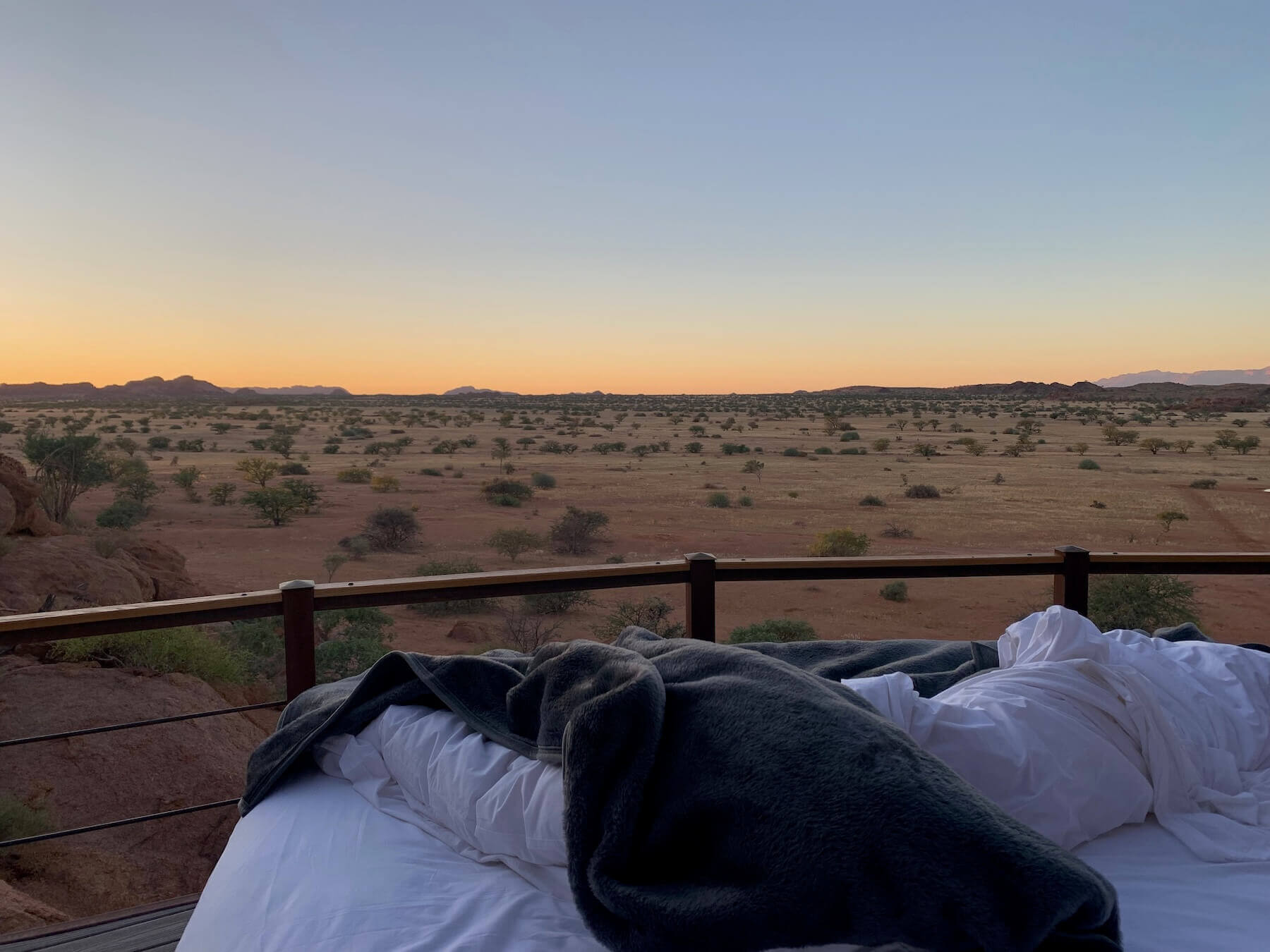During our stay at Onduli Ridge lodge, not only did we get to spend a morning searching out the desert elephants that inhabit the dry riverbeds of Damaraland, but we also spent half a day driving, then hiking over a rocky outcrop to get a glimpse of one of the few desert-adapted black rhinos left in the world. Several rangers from Save the Rhino Trust escorted us. It was incredible. We kept our distance so that the rhino wasn’t disturbed; though I think he heard us anyway, because he stood with his ears twitching, focused in our direction. The black rhinos are more curious (or aggressive, depending on how you think about it) than their white rhino cousins, so we stayed downwind and were as quiet as possible. Rhinos might not have the best eyesight, but they have very good hearing and an excellent sense of smell.



Onduli Ridge is in the Doro !Nawas Conservancy, a name meaning “the place where the rhinos roam” in the Nama language. The Doros Crater nearby is also named for this area. I was so happy that our guide, Imms, not only took us out to see the desert-adapted elephants and the rare black rhino, but he gave us a grand tour of the geology of the region.
Damaraland was covered in ice 300 million years ago. Melting ice and rivers flowing from higher elevations created stores of water far underground; so although Namibia is primarily desert, there’s a surprising amount of water far underneath the red rocky land of these deserts. Nearby are the famous basalt Organ Pipes formed by lava flows long ago, and so called because erosion has gradually revealed their dark hexagonal columns rising up to resemble, well, organ pipes. Burnt Mountain is also close (so named because it glows red like its on fire during sunset and sunrise due to manganese; the rest of the day it looks burnt black, as it was when we saw it the first time we visited). Much of this landscape was created by massive intrusive and extrusive lava flows that occurred over 150 million years ago (Imms explained the difference, but I’ll spare you my attempt to paraphrase, as I’d inevitably get the details wrong). All in all, it’s just an extraordinary place that hasn’t changed for millions of years, It contains some of the oldest rocks, deserts and formations on earth.



Many animals survive here: zebra, oryx, giraffe, elephants, rhinos, lions to name a few. They have all adapted over thousands of years.


One of the beautiful things we did each night at Onduli was roll our bed out onto the deck and sleep in the open air looking up at the stars.
The staff treated us so well during the week we were there. We initially stayed at the main lodge, booked for only a few nights. We extended our stay, though, because we enjoyed being here so much. When they couldn’t book us in the main lodge the last couple of nights, we were able to book the private Enclave lodge, which was had all to ourselves.














